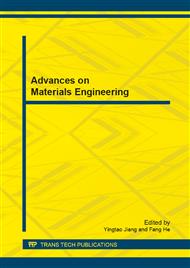p.69
p.74
p.80
p.86
p.92
p.99
p.107
p.112
p.117
Prediction Model and Relationship of Compressive and Tensile Strengths for High Performance Concrete
Abstract:
Analytical models for compressive strength and tensile strength of high performance concrete are presented. High performance concrete was developed using binary and ternary blending combinations consisting of ordinary Portland cement, pulverised fuel ash and silica fume. Pulverised fuel ash and silica fume were incorporated as partial cement replacements for the preparation of various combinations of blended systems. Compressive strength and tensile strength of concrete containing ordinary Portland cement, pulverised fuel ash and silica fume at various ages are reported. Based on the experimentally obtained results, analytical prediction models were developed. These models enabled the establishment of isoresponse contours showing the interactive influence between the various parameters investigated.
Info:
Periodical:
Pages:
92-98
Citation:
Online since:
August 2013
Authors:
Price:
Сopyright:
© 2013 Trans Tech Publications Ltd. All Rights Reserved
Share:
Citation:


